Cause of death Gunshot wound | Name Shawn Nelson | |
 | ||
Full Name Shawn Timothy Nelson Born August 21, 1959 ( 1959-08-21 ) Birdseye, Utah Died May 17, 1995(1995-05-17) (aged 35)San Diego, California | ||
Shawn Timothy Nelson (August 21, 1959 – May 17, 1995) was a U.S. Army veteran and unemployed plumber who stole an M60A3 Patton tank from a United States National Guard Armory in San Diego, California, and went on a rampage on May 17, 1995, destroying cars, fire hydrants, and a recreational vehicle before being shot and killed by police.
Contents
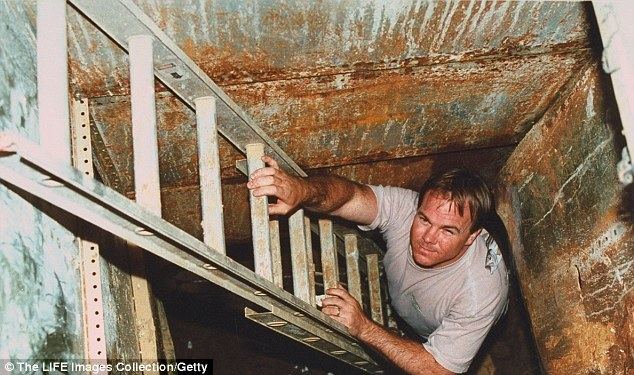
Prior to the incident
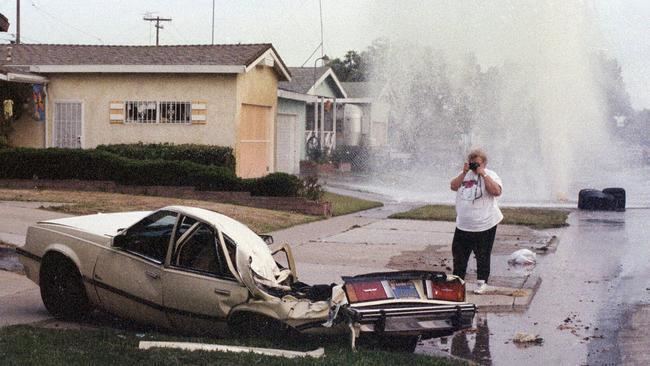
Nelson was hospitalized in 1990 for neck and back injuries from a motorcycle accident. He sued the hospital for $1.6 million citing negligence, assault, battery, and false imprisonment. A superior court judge dismissed the case, and the hospital counter-sued for $6,640 in medical fees and legal expenses. Nelson claimed that he was forced to be treated without his consent.
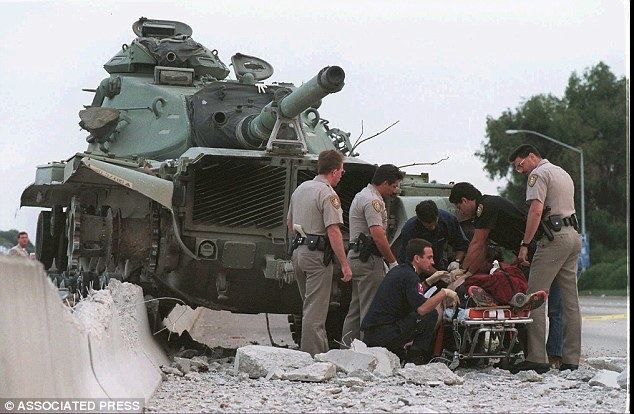
His wife of six years filed for divorce against him in 1991, and both of his parents died of cancer in 1992. Scott Nelson, Shawn's brother, said that Shawn became addicted to methamphetamine in the few years prior to the incident. His neighbors complained to authorities of Shawn yelling at his roommate at night. Nelson then began to exhibit unusual behavior. On one occasion, he dug a hole 15 feet (4.6 m) deep in his backyard in an attempt to mine for gold.

In February 1995, he filed a notice informing the county of his plans to mine bedrock in his backyard. Nelson's fishing friend, Carson Honings, referred to the mine shaft as Shawn's "new hobby". In April, he filed two damage claims against the city totaling $2,000,000. One of them was for police negligence, and another for false arrest.
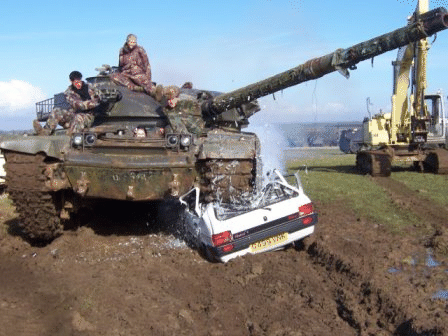
Nelson's neck and back problems, combined with the theft of plumbing equipment from his truck, effectively halted his business. With no income, his utilities were cut off and his house was in foreclosure. In April 1995, his live-in girlfriend died of a drug overdose. His brother, Scott, said of him, "My brother was a good man. He'd help anybody. He just couldn't help himself."
Tank rampage
According to San Diego police, the week before his tank rampage Nelson told a friend that he was thinking of committing suicide, and the following weekend, told a friend that "Oklahoma was good stuff," in apparent reference to the Oklahoma City bombing which happened about a month before. Whether Nelson condoned the attack or simply meant that he enjoyed the drama is not clear. Police did not believe Nelson had any connection with the bombing or with a terrorist group.
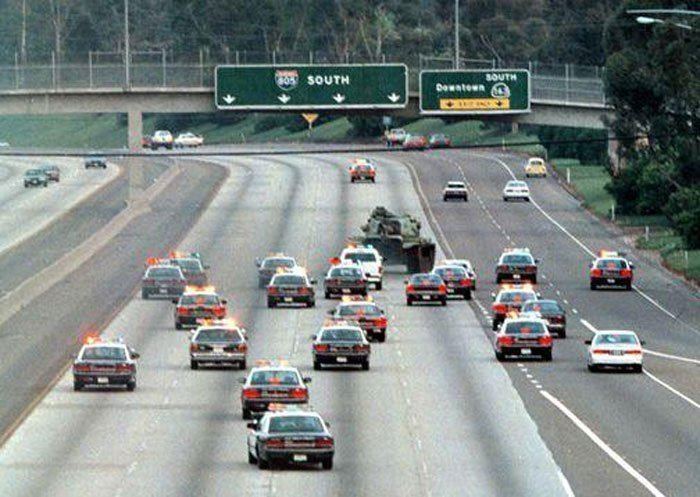
At dusk on Wednesday, May 17, 1995, Nelson drove his Chevrolet van to the California Army National Guard Armory in the Kearny Mesa neighborhood of San Diego. Although the gate to the vehicle yard was usually locked after 5:00 p.m., employees at the armory were working late, and left the gate open. The vehicle yard was completely deserted.
Nelson likely used a crowbar to break open the tank hatches . The tanks involved started with a push button and did not require an ignition key. The first two tanks he broke into would not start. As he lowered himself into the third tank, a 57-ton M60A3, he was finally noticed by a guardsman, who approached the tank. Nelson started the vehicle, and with little chance of stopping him, the guardsman rushed to a phone and called police. As ammunition was kept in another building, none of the vehicle's weapons could be loaded or used by Nelson.
Nelson led police on a 23-minute, televised chase through the streets of the Clairemont neighborhood of San Diego. Phillip Cady was the first police officer on the scene of the tank chase. The tank had a top speed of 30 miles per hour (48 km/h), making the chase slow compared to police chases involving automobiles. The 57-ton tank easily plowed through road signs, traffic lights, fire hydrants and crushed several parked vehicles including an RV. He even attempted to knock down a bridge by running into the supports, but gave up after he failed to topple it with the first few hits. He eventually became caught on a concrete median barrier of State Route 163, as he attempted to cross into oncoming traffic. Four police officers climbed onto the tank. San Diego Police officer Paul Paxton, a gunnery sergeant at the time with the Marine Corps Reserve, opened the hatch. The officers ordered Nelson to surrender, but he said nothing and began lurching the tank back and forth in attempt to free it from the median.
Officer Paxton's partner, Richard Piner, leaned in and shot Nelson. The bullet entered through Nelson's shoulder. Nelson later died in the hospital. Despite the widespread property destruction, Nelson was the only fatality in the incident.
Police action
Questions were raised as to whether it was necessary for the police to kill Nelson. Police Captain Tom Hall said that if Nelson had managed to free the tank, he "could have taken out no less than 35 vehicles that were passing at that moment."
Police decided that if non-lethal action such as tear gas were used, this might have stopped Nelson, but not the tank, and officers would not be able to enter the tank if it were still mobile with tear-gas present. According to live news coverage at the time, officials were seriously considering asking for help from the United States Marine Corps at Camp Pendleton in the form of a Cobra attack helicopter, as the police force lacked the means for disabling a tank. Scott Nelson, when asked, stated that police were justified in shooting his brother.
News coverage
Local television news station KGTV, Channel 10, broadcast footage of Nelson's shirtless, bloody body being pulled from the tank by police both live and during the eleven o'clock news. It was in the broadcast that Scott Nelson recognized his brother as the perpetrator. KGTV was the only station that decided to air this footage. Jeff Klotzman, then the news director at KGTV, said in response to criticism, "We felt it was a critical part of the story. We warned our viewers three different times that it was graphic, and it was." Richard Tuininga, news director of KUSI, Channel 51, supported Klotzman's decision, even though his own news program decided not to air the footage.
Armory security
Officials at the National Guard armory where Nelson stole the tank were criticized for what appeared to be a huge lapse in security, especially after the attack in Oklahoma City the previous month. In addition to the open, unguarded gate to the vehicle lot, the fence surrounding the lot had damaged barbed wire in some places.
Residents near the armory said that even if the gate had been locked, Nelson could have simply climbed the fence in sections where the barbed wire was damaged. Armory officials said that only a few people are given keys to the vehicles, that the vehicles were kept far away from fences to make them difficult to reach, that only someone with proper knowledge could operate and even start a tank, and that there was just no way to foresee such an event taking place. After Nelson's theft of the tank, security was tightened at the Kearny Mesa armory.
Documentary
Cul de Sac: A Suburban War Story, a documentary film, was based on the incident.
